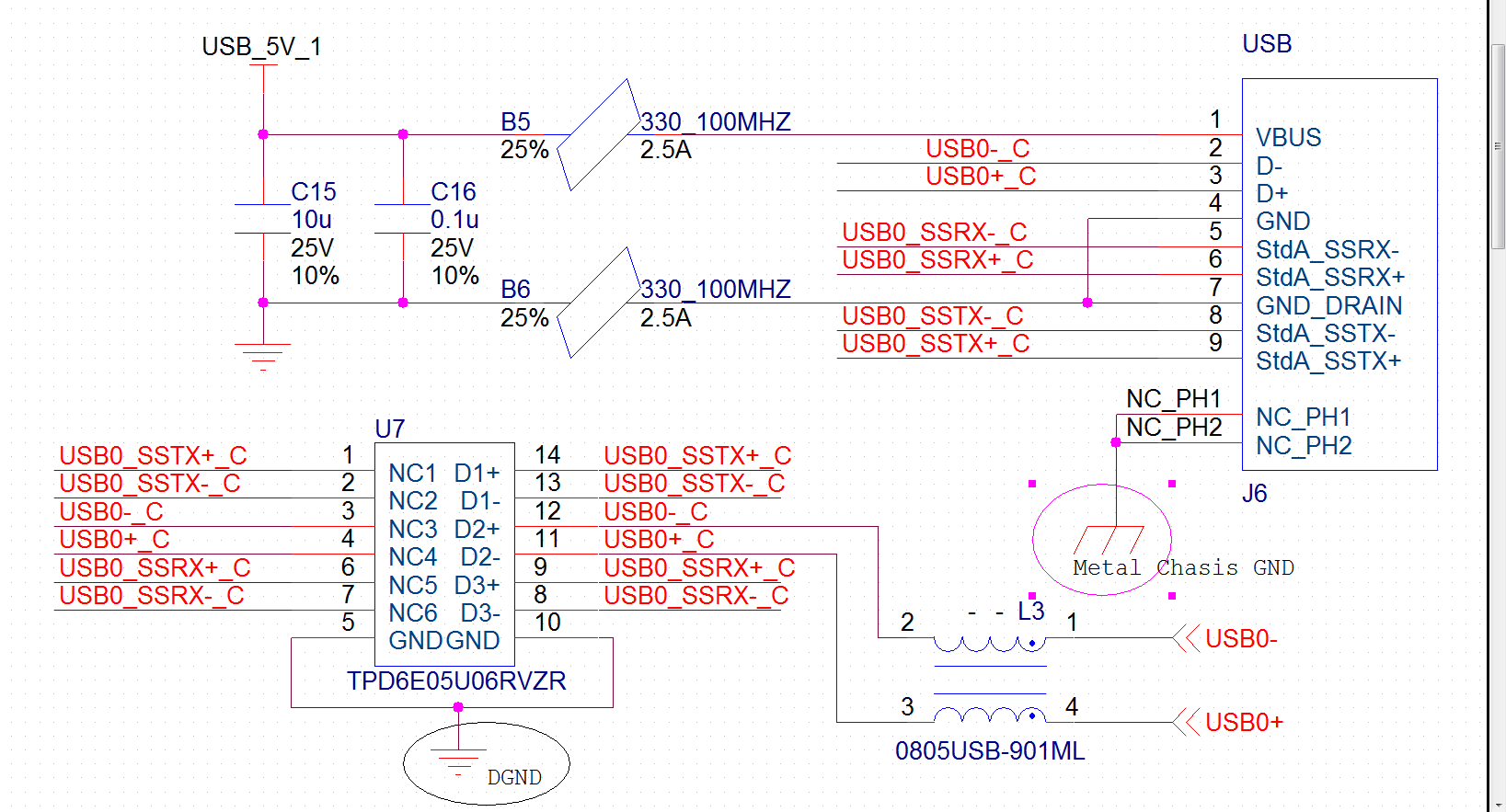Hi
we are using TPD6E05U06RVZR to protect USB 3.0 interfaces on a device, with metal enclosure(chasis) and internal IO PCB board.
SCH as below. Should I connect GND pins of TPD6E05U06RVZR to DGND(digital signal GND) or Metal Chasis GND (the metal enclosure) to ensure pass a 8-kv contact ESD test ?
Pls note the NC_PH1/2 pins are the two fix pins of usb connector.
Thanks. Any suggetions are welcome.


